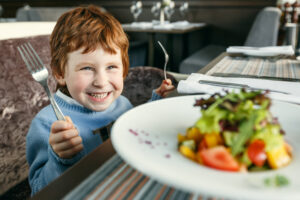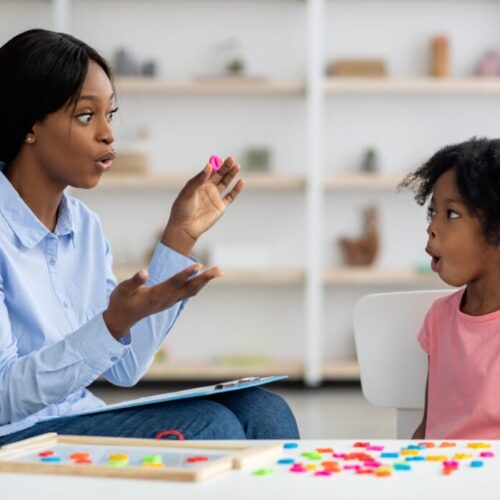Teaching good table manners

It may seem traditional, but having polite table manners is a useful life skill that will stay with your children throughout their life.
Teaching children good table manners is more than just ensuring they know how to use a fork and knife – it’s about having the skills to be able to eat in any setting. Good manners aren’t learnt overnight, but with patience and consistency, they become second nature. And, as an added bonus, well-mannered kids feel more confident in social situations and are more likely to understand how to behave at family gatherings, restaurants or when visiting friends.
Start early
The earlier you introduce basic table manners, the easier it will be for your child to adopt them as habits. Even toddlers can learn to say “please” and “thank you” or ask for something to be passed instead of grabbing for it. If you can, make your expectations clear from the start around using utensils properly, not interrupting others while they’re speaking and staying seated until everyone has finished eating.
It can be helpful to create a list of ‘family mealtime rules’ and quickly review it together before meals. You can even turn this into a fun project by creating a colourful chart to hang in the kitchen. Keep the rules simple and straightforward, such as “No speaking with food in your mouth” or “Always say thank you when your food is served.” This visual reminder will reinforce your expectations but in a positive and fun way, almost like a game.
Set a good example
As we know, children learn by observing the adults around them, so be sure to show your kids the table manners you’d like them to adopt. When you behave respectfully, you show your child that these actions are a normal part of daily life and they’re more likely to follow your lead if they see you consistently practising good manners.
When possible, have small conversations about table manners outside of mealtimes. If you notice someone displaying excellent manners on a television programme or in a storybook, point it out and explain why their behaviour was so great. This reinforces the concept of good manners in a context that your child can relate to.
Keep it positive
Avoid turning table manners into a battleground. If mealtimes are constantly associated with criticism or correction, your child might develop negative feelings about eating together. Instead, focus on the positives – praise your child when they exhibit good manners, no matter how small the action. Try sentences like “I love how you waited patiently for your turn to speak!” or “Great job keeping your napkin in your lap.”
To encourage good behaviour, consider introducing a reward system. For example, if your child uses their manners consistently throughout the week, they could choose a special weekend activity or receive a small treat. Positive reinforcement helps children understand that good manners are appreciated and noticed, motivating them to continue practising.
With time, patience, and encouragement, your little ones will soon master these skills and carry them with pride wherever they go.
Image Credit: ShutterStock











Comments